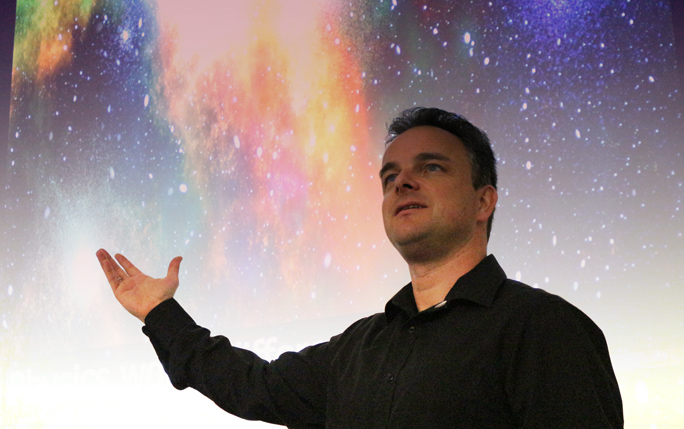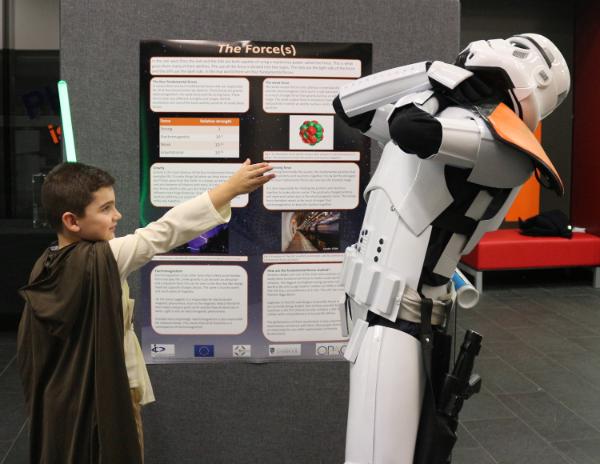Physics of Star Wars - Fact or Fiction?

Light sabres, hyper speed and droids – will they be made possible with the latest accelerator research? With the imminent launch of “The Last Jedi”, Professor Carsten Welsch, Head of the Department of Physics and Head of Communication for the Cockcroft Institute, is exploring the “Physics of Star Wars” in an event taking place today on campus, designed to introduce cutting-edge science to hundreds of high school children, undergraduate and PhD students, as well as university staff.
Professor Welsch explains his approach: “I selected iconic scenes from the movies that everybody will immediately recognise, and used real world physics to explain what is possible and what is fiction. For example, a lightsabre, as shown in the film, wouldn’t be possible according to the laws of physics, but there are many exciting applications that are possible, such as laser knives for high precision surgery controlled by robot arms and adaptive manufacturing using lasers for creating complex structures in metals.”
“A short scene from Star Wars was just the introduction, the appetizer, to make the participants curious, but then I linked what I had just shown in the film to ongoing research here in our department.”
“In the very first movie from 1977, the rebels have used proton torpedoes that make the Death Star explode as their lasers wouldn’t penetrate the shields. I linked that to our use of ‘proton torpedoes’ in cancer therapy. Within the pan-European OMA project, a flagship project within the university’s HEALTH research theme, we are using proton beams to target something that is hidden very deep inside the body and very difficult to target and destroy.
“For the lightsabre, there is a link to advances in lasers and laser acceleration being studied by an international collaboration within the EuPRAXIA project. This programme is developing the world’s first plasma accelerator with industry beam quality. It uses a high intensity laser pulse to drive an electron beam and accelerate this to high energies. Applications in science or industry for advanced lasers include for example an advanced form of 3D printing for metals.”
“The light and dark side of the Force in Star Wars was an ideal opportunity to talk about matter and antimatter interactions which we are exploring in the brand-new research network AVA.”
“Making the kind of intelligent droids featured in Star Wars such as R2D2 and C-3PO requires a huge amount of data and the ability to analyse it. We have just launched the LIVDAT big data science centre for doctoral training which includes a machine-learning strand. For this we task machines to respond to change by looking at the data and finding their own approach – an exciting research area in the core of the university’s DIGITAL research theme. So again, there is a link that you can create quite easily between the cutting-edge research we are doing and the famous movies.”

After the lecture, all participants are given the opportunity to understand the science behind Star Wars through numerous hands-on activities in our award-winning Central Teaching Laboratory. This includes laser gravity, augmented reality experiments, and even a full-scale planetarium which will immerse participants into the world of Star Wars.
Professor Welsch and members of his QUASAR Group had the kind permission of Lucasfilm to use film excerpts; these were complemented by Lego Star Wars models, a real cantina as found in the movie, storm troopers and even Darth Vader himself!
Many thanks to all who have helped make this fantastic event possible, in particular the department’s outreach and communication group, and the many student and staff helpers. This only happens in Liverpool physics!
This is not an official Disney/Lucasfilm event, but planned, organised and run by Liverpool staff and students.